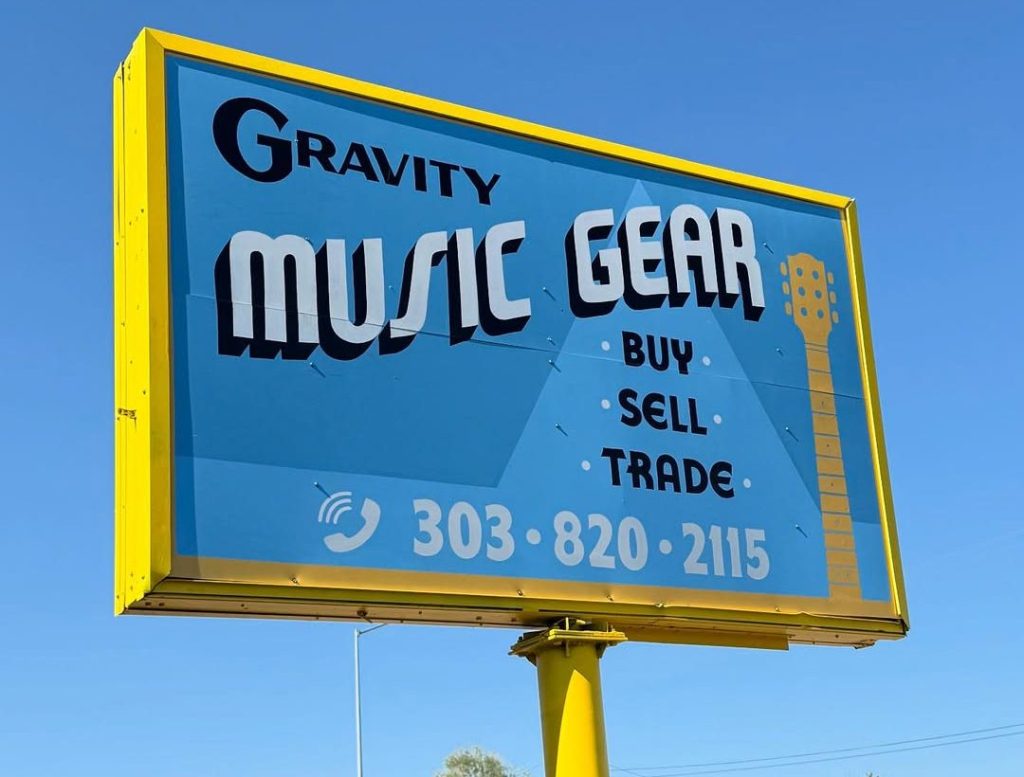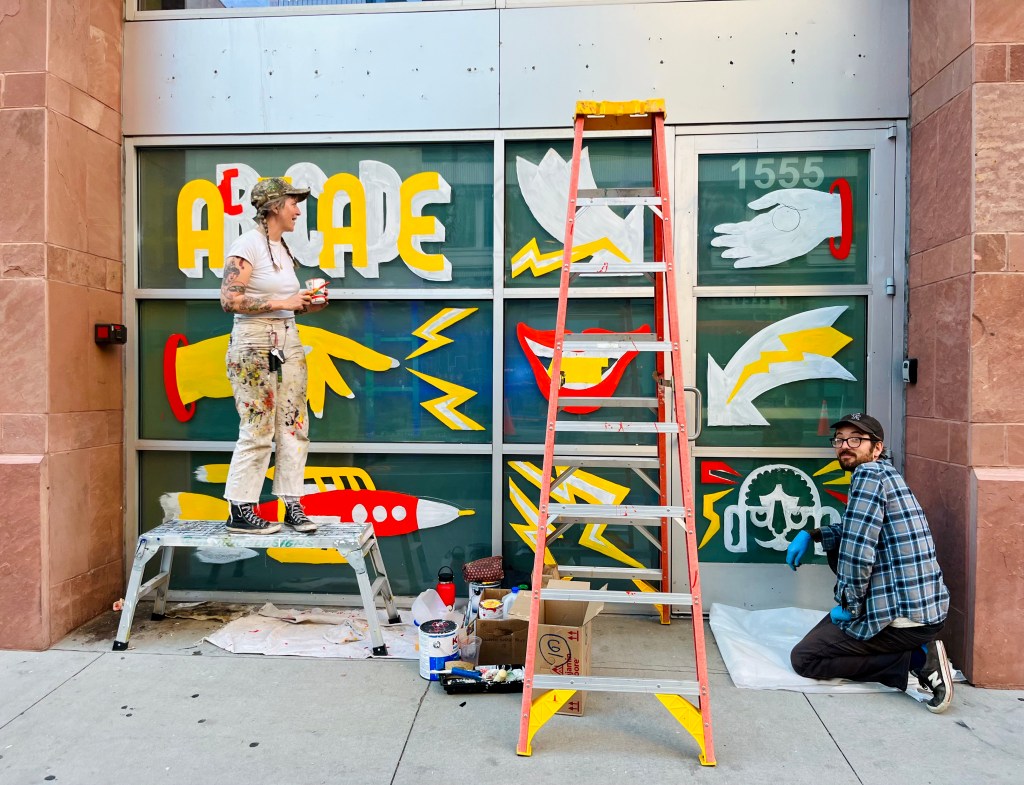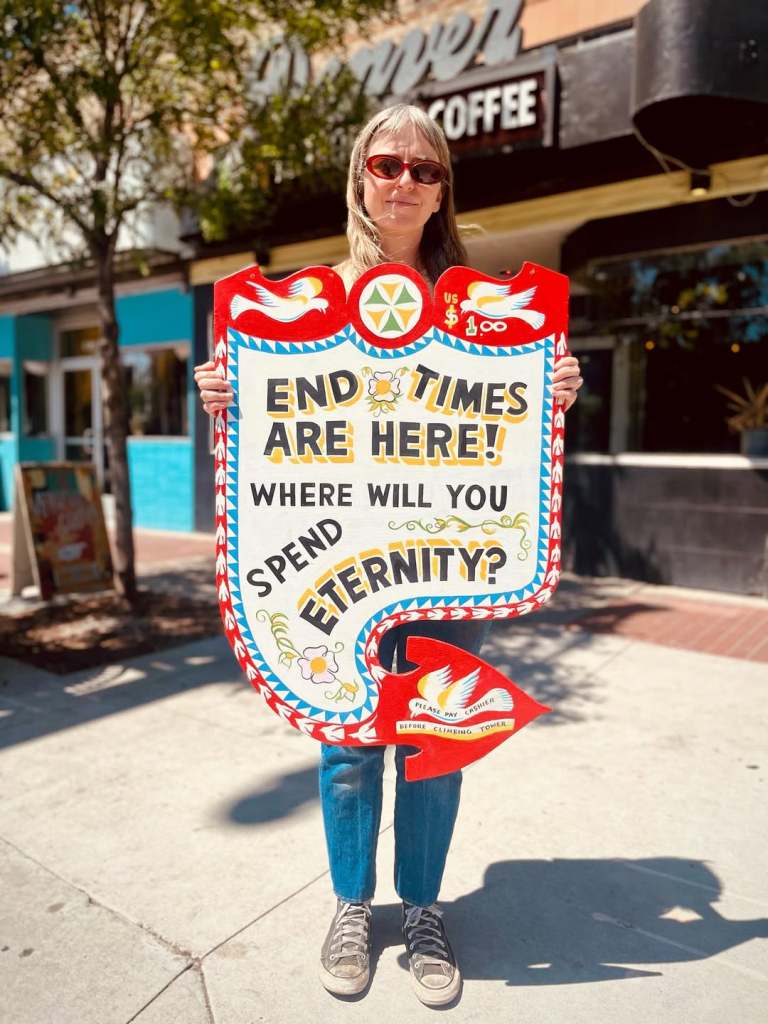
Odd World Signs

Audio By Carbonatix
In the sprawl of Denver, signs are optical forces in storefronts and parking lots, giving rare air to their communities and attracting people in magnetic fashion for all reasons.
Nick Miller has been running Sooner or Later Sign Co. since 2020. Now operating in RiNo, the company provides hand-painted signs for local businesses across metro Denver and beyond.
“I fell into it,” Miller says. “I was living in Richmond, working in a grocery store while I played in a band. One of the guys was making chalkboard signs in the basement, and they looked really cool. I was the cashier, and I hated my job, but I loved drawing and illustrating, and it felt like this obvious tunnel into the world of sign painting.”
A few years later, Miller was beginning to garner business when he attracted the attention of his eventual mentor, Ross Trimmer of Surehand Signs in Richmond, Virginia, who reached out to offer guidance. “He said he hated bad signs and offered to teach me how to paint good signs,” Miller remembers.
Will you step up to support Westword this year?
At Westword, we’re small and scrappy — and we make the most of every dollar from our supporters. Right now, we’re $23,000 away from reaching our December 31 goal of $50,000. If you’ve ever learned something new, stayed informed, or felt more connected because of Westword, now’s the time to give back.
With a proper foundation, Miller was able to cultivate his own style. “A touch of modern, mid-century — big blocky letters, bold colors. All my stuff is very classic. My signs have a bit more uniformity to them,” he says.

Nick Miller
Miller’s signage varies by the business. You may see his designs on the fascia of a storefront, the window of a café or along a sidewalk downtown. While most businesses have a vision, Miller admits, “The aesthetic comes with the ability for artistic freedom.” His work animates a nostalgia through retro lettering.
Every sign painter has their power. Jae Mo, Kevin Hennessy and Hennessy’s brother, Lynn, have been operating Odd World Signs since 2016, painting signage in their own brand of Americana folk.
After graduating from Littleton High School in 2005, Hennessy started illustrating menus and chalkboard signs for local businesses around town. A shared creative habit with his brother spurred their entrance into the professional world. “We’d sell at art markets with signs, paintings, etc. Occasionally, we’d sell at Ironwood,” (now closed), Hennessy remembers. Sign painting became the natural answer for both. By 2011, Hennessy and his brother were operating their first business, Original Signs.
Hennessy and Mo later met while hanging around similar circles and started painting together. In 2016, they became known as Odd World Signs. After a brief stint in Portland, they started offering their services locally in Denver eight years ago with the help of Lynn. Occasionally, they collaborate with Miller on different projects around the city.

Odd World Signs
Careful consideration is given to how each sign will communicate. “A bakery or a hair stylist or a tattoo shop opens, and they want to be excited every time they walk into their business. I can help create the branding. I can pick the colors, lettering style and help them make those decisions,” Miller explains. “Our expertise is brush technique. Knowing why numbers and letters look the way they do and choosing them.”
“A sign doesn’t cost. It pays,” adds Miller. He recognizes they’re a daily visual staple — part of the eye’s diet. “It saves information that keeps employees from repeating it daily… It keeps people coming in,” he continues. Signs provide order in the chaotic flow of society.
Despite the necessity of signs, competition is still strong in the industry. “Convenience is so available now that it makes it challenging,” Miller points out. “When vinyl came around in the ’80s, sign-making disappeared. There’s been a resurgence from 2007, ’09 or so until now.”
Hand-painted signs remain distinguished amongst other options, though. “Vinyl peels off. It is easy to replace and costs a lot less, but you’re going to replace it two to three times, whereas a hand-painted sign will last,” Miller explains.
The style offers a resistance to what Mo calls “The grayification of Denver.”
“There’s a wistfulness to it,” she says. “Hand-painted signs feel alive. They give humanity to a building.” It’s an effect that carves through the city like the grooves of a fingerprint.
“There’s a Latino flair in Denver,” Hennessy adds. “Whether it’s a taqueria or a tire shop [sign]. You’re gonna see a different style of that version in LA or in Tijuana.”

Nick Miller
Hennessy and Mo are walking archives of folk art, rattling off the work of other painters with ease. Some signs still breathe with modernity, while others hold petrified imagery of the past. “On First and Knox, maybe down one block, there’s a Paletería [Chihuahua] that has a hand-painted version of the guy pushing a cart wearing Nike Cortez’s,” Hennessy says. “Matt O’Neill has restored a lot of old ghost signs. He did the Coca-Cola mural on Welton. Then there’s this big one that says ‘American Beauty and the Western Aristocrat,’ right on the corner of Welton across from Queen City Coffee.”
Mo mentions another local sign painter, Chuck Dorsey, as an influence. “Sign painting is a community,” she says. They need each other to keep the imagination spry.
Following that philosophy, Mo signed up for an online course taught by Doc Guthrie at LA Trade Tech during the COVID-19 lockdown. “The class was super pivotal for my confidence in sign painting,” she says. “I learned so many tricks of the trade and made real community outside of social media. …Doc was critical, but cared so much about us all. It made you want to work harder. He was a hard ass with a heart of gold.”
Miller’s approach resists romanticization. “It’s only a fucking sign,” he says, referring to an old sign painter’s motto for settling the nerves. Even so, his love for the craft is infectious, and he shares it with the community. “I put on lettering classes. Sign painting has been predominantly done by older white men, so I try to offer a discounted rate to help diversify the craft and open that door for new communities excited about it.”
He adds that sign painting comes down to education, passion and history. “In order for it to stick around, people have to really want it and go for it,” Miller says.
For those interested, sign painting can be a constant endeavor of theft. Mo and Hennessy scavenge inspiration wherever they go. “We’ve always been into folk art,” Hennessy says.
A lot of their inspiration comes from the road. “That’s the kind of traveling we like to do,” Mo says. “Go around and take photos of cool signs. It’s like a cool thread we carry with us.”

Jae Mo
“Detroit had an automotive style,” Hennessy recalls.
Mo mentions “grocery style signs” as one of her influences. Other sources come from local spots. “I think Lakeside is a big inspiration — carnivals, carny lifestyles,” she shares.
There’s a sort of magic to their work, hinting at a hidden reality beyond the veil. The best hands have a transcendental understanding of a business’s needs, as well as its surrounding community. Often, Hennessy says, “We fail business ideas and guide them.”
“Painting is the smallest part of sign painting,” Mo explains. “You have to plan it, do mockups, observe the neighborhood.”
“You look at traffic, foot traffic. Make sure it clearly states what the business does,” Hennessy adds. A good sign is much like the wind; you can’t avoid it.
Mo believes a good sign is “something that stands out. Something that reads well. I think a good sign for us has playfulness.”
They’re a layer to a community that’s typically overlooked, but in those moments when you’re walking on the street, there’s a sensory difference. “They’re inviting,” Mo says.
Signs might not be viewed as fine art, but they function similarly. In the guise of commercialism, they communicate a message people need to hear: “Come on in. We’re open.”